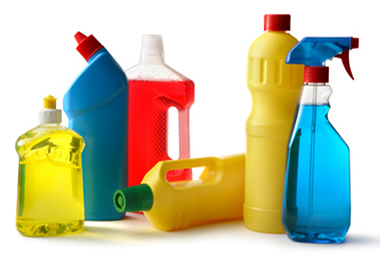Study: Mixtures of Common Chemicals May Increase Cancer Risk
University at Albany Researcher Urges International Collaboration
 |
|
Researchers from UAlbany’s School of Public Health joined a task force of 174 scientists, concluding that average daily exposure to mixtures of chemicals might increase the risk of cancer beyond the risks from individual chemicals on their own.
|
ALBANY, N.Y. (June 23, 2015) -- Amid a global cancer epidemic, a task force of 174 scientists from research and medical institutions in 28 countries including UAlbany’s School of Public Health, concluded that average daily exposure to mixtures of chemicals might increase the risk of cancer beyond the risks from individual chemicals on their own.
The researchers were assembled by the NGO “Getting to Know Cancer” to tackle longstanding theories and concerns over the relationship between combinations of commonly encountered chemicals and the development of cancer. Their findings were published in a special issue of the peer-reviewed journal, Carcinogenesis (23 June 2015).
"This is an area that merits considerable attention and where interdisciplinary and international collaboration is needed," said David Carpenter, director of the Institute for Health and the Environment of the University at Albany (a World Health Organization Collaborating Centre) and a project contributor. "The science in this field is changing rapidly. Although we know a lot about the individual effects of chemicals, we know very little about the combined and additive effects of the many chemicals that we encounter every day in the air, in our water, and in our food."
According to the research group, the current national paradigm for testing chemicals rarely considers the synergistic or complementary roles of chemical mixtures. Safety testing of exposure to combined chemicals is nearly absent in the U.S. and Canada.
From the thousands of chemicals which the general population regularly encounters, the researchers selected 85 prototypic chemicals that were not considered to be carcinogenic to humans, and reviewed their effects against a long list of mechanisms that are important for cancer development. Working in teams that focused on various hallmarks of cancer, the group found that 50 of those chemicals support key cancer-related mechanisms at environmentally-relevant levels of exposure.
"We found definite evidence that chemicals that are unavoidable in the environment can produce a wide range of low-dose effects that are directly related to carcinogenesis. So the way we’ve been testing chemical safety is really quite out-of-date,” said William Goodson III, a senior scientist at the California Pacific Medical Center in San Francisco. “Every day we are exposed to an environmental ‘chemical soup’ and we need testing to evaluate the effects of our ongoing exposure to the mixtures in this soup."
This was the first time that this large-scale problem has ever been considered by interdisciplinary teams that could interpret the full spectrum of cancer biology and incorporate what is now known about low-dose chemical effects. In light of the evidence, the task force is calling for an increased emphasis and support for research on low-dose exposures to mixtures of environmental chemicals.
Current estimates suggest that as many as one in five cancers may be due to chemical exposures in the environment that are not related to personal lifestyle choices. The researchers conclude that the effects of exposures to mixtures of commonly encountered chemicals need to be better understood if we hope to reduce the frequency of cancer.
The full study can be found here.
![]() For more news, subscribe to UAlbany's RSS headline feeds
For more news, subscribe to UAlbany's RSS headline feeds
A comprehensive public research university, the University at Albany-SUNY offers more than 120 undergraduate majors and minors and 125 master's, doctoral and graduate certificate programs. UAlbany is a leader among all New York State colleges and universities in such diverse fields as atmospheric and environmental sciences, business, education, public health,health sciences, criminal justice, emergency preparedness, engineering and applied sciences, informatics, public administration, social welfare and sociology, taught by an extensive roster of faculty experts. It also offers expanded academic and research opportunities for students through an affiliation with Albany Law School. With a curriculum enhanced by 600 study-abroad opportunities, UAlbany launches great careers.


